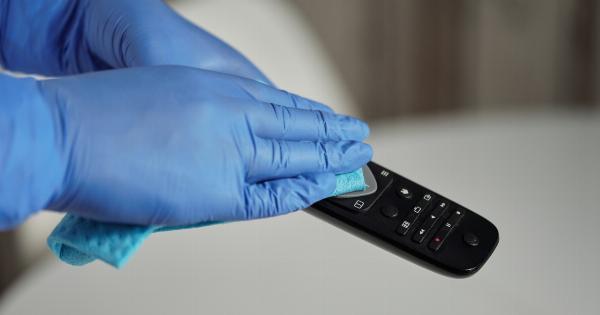Macular degeneration is a common eye condition that affects the central part of the retina, known as the macula. It can result in blurred or distorted vision, making it difficult to perform daily tasks such as reading or driving.
Early detection is crucial in managing macular degeneration and preventing further vision loss. While it is always recommended to consult with an eye care professional for a proper diagnosis, there are some quick and simple methods you can use to test for macular degeneration at home.
In this article, we will explore these methods and provide you with the necessary information to assess your macular health.
Amsler Grid Test
The Amsler grid test is a simple tool that can help identify any abnormalities or changes in your central vision. To perform this test, follow the steps below:.
- Find a quiet and well-lit area in your home.
- Wear your usual prescription glasses or contact lenses.
- Hold the Amsler grid at your normal reading distance, typically about 14-16 inches.
- Cover one eye and focus on the central dot in the grid.
- While keeping your eye on the central dot, pay attention to the surrounding lines. Do they appear straight or distorted?
- Repeat the process with the other eye.
- Note any changes or abnormalities in your vision and consult with an eye care professional if necessary.
Visual Acuity Test
Visual acuity tests assess your ability to see objects clearly and read letters or numbers from a certain distance.
While there are more accurate tests conducted by eye care professionals, you can perform a basic visual acuity test at home using the Snellen chart. Follow these steps to perform the test:.
- Hang the Snellen chart on a well-lit wall at eye level.
- Stand exactly 20 feet away from the chart.
- Cover one eye and read the lines on the chart, starting from the top.
- Continue reading until you are no longer able to clearly identify the letters or numbers.
- Repeat the process with the other eye.
- Take note of any difficulties or changes in your ability to read the chart and consult an eye care professional as needed.
Home Amsler Grid App
In addition to the traditional Amsler grid, there are also smartphone applications available that allow you to conduct the test at home.
These apps provide a digital version of the grid and often have additional features to track and monitor your macular health over time. Simply download the app onto your smartphone or tablet, follow the instructions, and perform the test as you would with the physical Amsler grid. Remember to consult with an eye care professional if you notice any changes in your vision.
Color Vision Test
Macular degeneration can also affect your color vision. While there are various tests available to assess color vision, a simple and quick method you can try at home is the Ishihara color plates. Follow these steps to perform the test:.
- Find a quiet and well-lit area in your home.
- Ensure there is no glare or reflection on the color plates.
- Cover one eye and focus on the numbers or shapes within the color plates.
- Attempt to identify the numbers or shapes.
- Repeat the process with the other eye.
- Take note of any difficulties or changes in your ability to identify the numbers or shapes and consult with an eye care professional if necessary.
Home Genetic Testing
With the advancements in genetic testing, it is now possible to assess your risk of developing macular degeneration through a simple at-home DNA test.
These tests analyze specific genes that are associated with the condition and provide you with valuable information about your genetic predisposition. However, it is important to note that genetic testing should not be solely relied upon for a diagnosis of macular degeneration. It is still crucial to consult with an eye care professional for a comprehensive evaluation.
Home Vision Monitoring Devices
There are also home vision monitoring devices available that allow you to regularly assess your macular health. These devices utilize advanced technology to detect any changes or abnormalities in your vision.
Some devices use the concept of preferential hyperacuity perimetry (PHP) to detect subtle changes in visual perception. Others use optical coherence tomography (OCT) to provide detailed images of your retina. These devices often require a prescription, so consult with an eye care professional to determine the most suitable option for you.
Low Vision Aids
If you have already been diagnosed with macular degeneration, using low vision aids can greatly enhance your quality of life.
These aids include magnifiers, telescopes, and closed-circuit televisions (CCTVs) that can help you read, watch television, or perform other tasks that require visual acuity. Consult with a low vision specialist to determine the most appropriate aids for your specific needs.
Nutrition and Lifestyle Changes
While not a direct method of testing for macular degeneration, making certain nutrition and lifestyle changes can contribute to maintaining eye health and reducing the risk of developing the condition.
Incorporate foods rich in antioxidants and essential nutrients, such as leafy green vegetables, fish high in omega-3 fatty acids, and colorful fruits, into your diet. Additionally, protect your eyes from harmful UV rays by wearing sunglasses and maintain a healthy lifestyle by exercising regularly, not smoking, and managing chronic conditions such as hypertension and diabetes.
Regular Eye Exams
Lastly, one of the most important steps in testing for macular degeneration and overall eye health is scheduling regular eye exams with an eye care professional.
Even if you perform tests at home or use monitoring devices, these are not substitute for a comprehensive examination conducted by a trained specialist. Regular eye exams allow for early detection and prompt treatment, if necessary, to help preserve your vision.
Conclusion
While there are quick and simple methods to test for macular degeneration at home, it is important to remember that a proper diagnosis can only be made by an eye care professional.
These methods can help you monitor your macular health and identify any potential changes or difficulties in your vision. Early detection and intervention are crucial in managing macular degeneration and preserving your vision, so do not hesitate to consult with an eye care professional if you notice any changes in your eyesight.





























